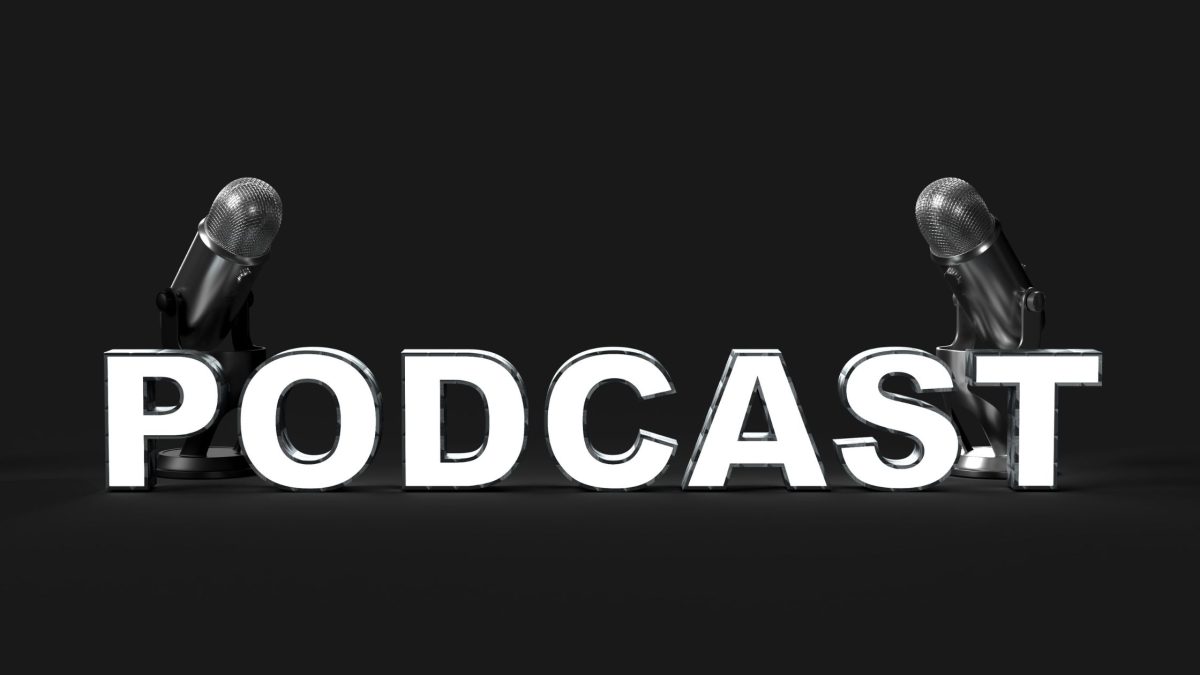Have you considered podcast guesting as an option for expanding your SaaS brand’s reach?
We’ll explore how one SaaS leader, with my help, appeared on over 240 podcasts, significantly boosting their brand. Here is the story of the podcast strategy development with Liam Martin, the expert behind Time Doctor and Running Remote.
The Initial Challenge
In 2018, as Liam prepared for the first Running Remote conference in Bali, he faced a challenge. The location was perfect, and the agenda was strong, but the community was new, and there were few promotional partners.
Tactical Response: Podcasts as the New Frontier
Recognizing the untapped potential of podcasting, Liam decided to explore this medium to forge connections with potential attendees and collaborators, thereby raising the profile of Running Remote.
Looking to use podcasts to build your brand? Check out this collection of 50 inspiring podcast quotes for motivation.
Strategic Execution: A 90-Day Podcast Odyssey
Liam’s journey started with getting featured on 57 handpicked podcasts over three months. This move was aimed at reaching a broad audience. We selectively targeted platforms where his vision and the essence of Running Remote could be best communicated.
Tangible Outcomes and Extended Benefits
The immediate result was the sale of 30 tickets to the conference, a direct testament to the strategy’s effectiveness. More so, each podcast appearance, averaged a revenue of about $400 (averaging half a ticket sold via each podcast appearance). Through it, important partnerships were established and conference visibility was significantly increased.
Liam’s story is a powerful demonstration of podcasts’ impact on the SaaS industry fostering business growth and establishing lasting industry relationships.
Escalating the Game: Securing Over 240 Podcast Appearances
We then secured over 240 podcast appearances in a year, boosting his business and personal brand. This success came from a strategy focused on people, processes, and tools.
1. People: The Pillars of Our Strategy
To effectively execute our podcast outreach strategy, we identified three essential roles: a dedicated researcher, a skilled outreach specialist, and Liam’s committed participation as a podcast guest.
Let’s take a closer look at each of these key roles:
1. Podcast researcher
We needed to have a research-driven role that could target specific podcasts with our ideal demographic. To do this, we hired an experienced researcher who researched the industry and identified the best-fit podcasts for Liam.
The Researcher’s Toolkit: Identifying Ideal Podcasts
The researcher focused on the following key areas to find the best podcasts for Liam’s appearances:
- Understanding the Target Audience: The first step was to gain a deep understanding of the target audience. This involved analyzing demographics, interests, and listening habits to ensure that the chosen podcasts had a listener base that aligned with our objectives.
- Assessing Relevance: Relevance is key to effective promotion. The researcher reviewed each podcast’s themes, topics, and content. This ensured they aligned with Liam’s expertise and the main messages of Time Doctor and Running Remote.
- Popularity and Ratings: The impact of a podcast is often reflected in its popularity and listener ratings. Our researcher analyzed listener numbers, episode download statistics, and overall ratings to gauge the potential reach and influence of each podcast.
- Analyzing Past Guest Profiles: Understanding who has previously been featured on the podcast offered valuable insights. The researcher scrutinized past guest lists, examining their backgrounds and the nature of their discussions. This helped in assessing the podcast’s alignment with Liam’s stature and the depth of conversation he could offer.
2. Podcast Outreach Specialist
I tailored my podcast outreach strategy to each podcast individually. Instead of generic emails, I took the time to understand each podcast’s unique qualities. This allowed me to create personalized outreach plans that genuinely connected with the hosts.
As the outreach specialist, I designed this strategy to ensure every message was personalized for better responses.
- Creating a Podcast One Sheet: Creating a compelling podcast one sheet was essential in positioning Liam Martin as a remote work authority and securing podcast features. Emphasis was placed on presenting his expertise, achievements, and social proof.
- Understanding Format and Style: I began by looking into each podcast’s format and style. This involved grasping their tone, pacing, and structure to ensure our outreach fit well with their content.
- Analyzing Host’s Interviewing Skills: I studied each host’s interviewing style. I observed how they engaged with guests, the questions they posed, and their general approach to conversations. This understanding helped me customize my pitches to match the host’s style.
- Assessing Audience Engagement: Understanding the level and type of audience engagement was crucial. I examined how the audience interacted with the podcast through comments, social media, and ratings. This helped me gauge the type of content that resonated most with their listeners, allowing us to position Liam’s story in the most appealing way.
- Evaluating Reputation and Credibility: The reputation and credibility of each podcast were carefully considered. I aimed to align with podcasts that not only had a good standing in their niche but also those that upheld a level of professionalism and authority.
- Promotion and Distribution Channels: I examined each podcast’s promotion and distribution channels. By understanding how they marketed their podcast episodes and the reach they had, I could align our efforts to amplify Liam’s appearances effectively.
- Considering Time Commitment: I assessed the time commitment required for each podcast, balancing it against Liam’s schedule. This ensured that we chose podcasts that could accommodate his availability.
- Identifying Mutual Benefits: Our strategy involved identifying mutual benefits for both Liam and the podcast hosts. We focused on how Liam’s expertise and insights could add value to their content while also enhancing his visibility and brand.
- Fostering Personal Connections: Lastly, I aimed to establish a personal connection with each host. This involved personalizing our communication to reflect an understanding of their work, their audience, and their podcast’s mission. By showing genuine interest and appreciation for their podcast, I fostered a rapport that went beyond a mere business transaction.
3. Liam’s Unwavering Commitment
As the face of the campaign, Liam’s disciplined approach was key. His dedication to appearing on multiple podcasts each week played a crucial role in the campaign’s success.
All in all, Liam’s role was refreshingly straightforward yet impactful.
As the central figure of the initiative, Liam was freed from the complexities of show selection, outreach negotiations, and detailed preparations. Our strategy was designed to streamline his involvement, allowing him to focus solely on delivering his knowledge on each podcast.
- Seamless Scheduling and Preparedness: Each week, Liam’s participation was effortlessly guided by a well-curated calendar. For every podcast interview, our research and outreach specialists prepared detailed notes and key points, which were added to Liam’s meeting invites.
This level of preparation provided Liam with a clear and concise understanding of the upcoming podcast, including —- Insights into the audience,
- The style of the host, and
- The specific angle we aimed to present in that particular session.
- The Liberation from Logistical Hassles: This approach eliminated any need for Liam to engage in time-consuming tasks such as coordinating schedules, researching each podcast, or crafting outreach emails.
- Liam’s Focused Contribution: Liam’s commitment was thus distilled into what he does best – engaging in meaningful dialogues and sharing his expertise. His disciplined approach to adhering to the schedule and being well-prepared for each discussion, thanks to the information provided, was instrumental in the success of our campaign. He could devote his time and energy to what mattered most – connecting with the podcast audience and effectively communicating his and Running Remote’s vision.
2. Processes: The Engine of Our Campaign
Our success relied on two main things: commitment and efficient processes. We also found that working asynchronously played a big part.
- Mastering Asynchronous Collaboration: Asynchronous collaboration was at the heart of Liam Martin’s seamless integration into the podcasting strategy. It enabled him to balance his podcast commitments and other professional responsibilities. This approach was critical in ensuring a smooth and uninterrupted flow of podcast appearances, without overburdening his daily schedule.
Liam’s experience with asynchronous work is best described in his own words:
“Vaishali, who is someone that ended up connecting us for this podcast, who works in PR, I’ve worked with her for six years, and we’ve met in person or video five times during that period. But we work every single day through our project management systems, through our instant messaging, through our processes, through email.”
This quote highlights the efficiency and effectiveness of remote collaboration. Despite minimal face-to-face interactions, our daily coordination through digital platforms like project management systems, calendars and messaging, and emails has been highly productive and successful. - Tailored Scheduling for Maximum Impact: Our approach was to tailor Liam’s podcast schedule in a way that aligned with his other work commitments. By utilizing digital tools like Calendly and communication channels, we were able to plan his podcast appearances precisely.
- Streamlined Communication for Peak Efficiency: The key to our success in asynchronous collaboration was streamlining communication. Our team ensured that every interaction with Liam was concise, relevant, and timely. This approach minimized the need for lengthy meetings or back-and-forth emails, thereby saving valuable time.
- Embracing Digital Tools for Synchronized Workflow: The use of project management tools and other digital platforms facilitated a synchronized workflow between Liam and our team. This setup allowed for real-time updates, immediate access to information, and the ability to track progress, ensuring that everyone involved was always on the same page.
- Streamlined Scheduling: The success of Liam Martin’s extensive podcast campaign was significantly anchored in the art of streamlined scheduling. By rigorously managing his calendar, we were able to seamlessly integrate podcast recordings into his busy professional life, ensuring a harmonious blend of his entrepreneurial responsibilities and his role as a podcast guest.
- Precision in Planning: Every aspect of Liam’s participation in podcasts was planned with precision. This meant not only selecting suitable days and time slots for recordings but also considering the preparation time required for each session. Our scheduling strategy took into account the various time zones of the podcast hosts, Liam’s peak productivity hours, and his availability amidst other professional commitments.
- Dynamic Calendar Management: Our team employed dynamic calendar management techniques to ensure flexibility and efficiency. We used advanced scheduling tools like Calendly to provide Liam with a real-time view of his commitments. This system allowed for quick adjustments and rescheduling when needed.
- Pre-emptive Coordination: In addition to scheduling the podcast recordings, we also coordinated pre-interview meetings and briefings if needed. This pre-emptive approach ensured that Liam was well-prepared for each podcast, familiar with the topic of discussion, and aware of any specific requirements or expectations from the podcast hosts.
- Buffer Time for Quality Assurance: We also integrated buffer times into Liam’s schedule. These buffers were crucial in providing him with necessary breaks between recordings and other engagements, preventing burnout, and maintaining the quality of his participation in each podcast.
Outcome: Each podcast appearance was carefully planned and timed. This approach boosted Liam’s availability and performance. It greatly contributed to the podcast campaign’s success.
3. Tools: The Framework of Our Success
- Discovering the Right Podcasts: Using platforms like Google, ListenNotes, and Apple Podcasts, we identified shows that resonated with our goals.
- Finding Key Contacts: Hunter.io was instrumental in sourcing contact details of hosts and producers.
- Managing Outreach: Buzzstream enabled us to track our outreach sequences effectively.
- Efficient Scheduling: Tools like Calendly ensured Liam’s participation in podcasts was organized and hassle-free.
Conclusion: Crafting a Success Story in Podcast Outreach
Liam’s 240+ podcast appearances were a result of a well-planned strategy. It boosted his brand and set a new standard for SaaS podcast marketing.
Curious about how my podcast outreach service can elevate your brand?
Schedule a 30-minute meeting with me to see the possibilities. Let’s connect!

